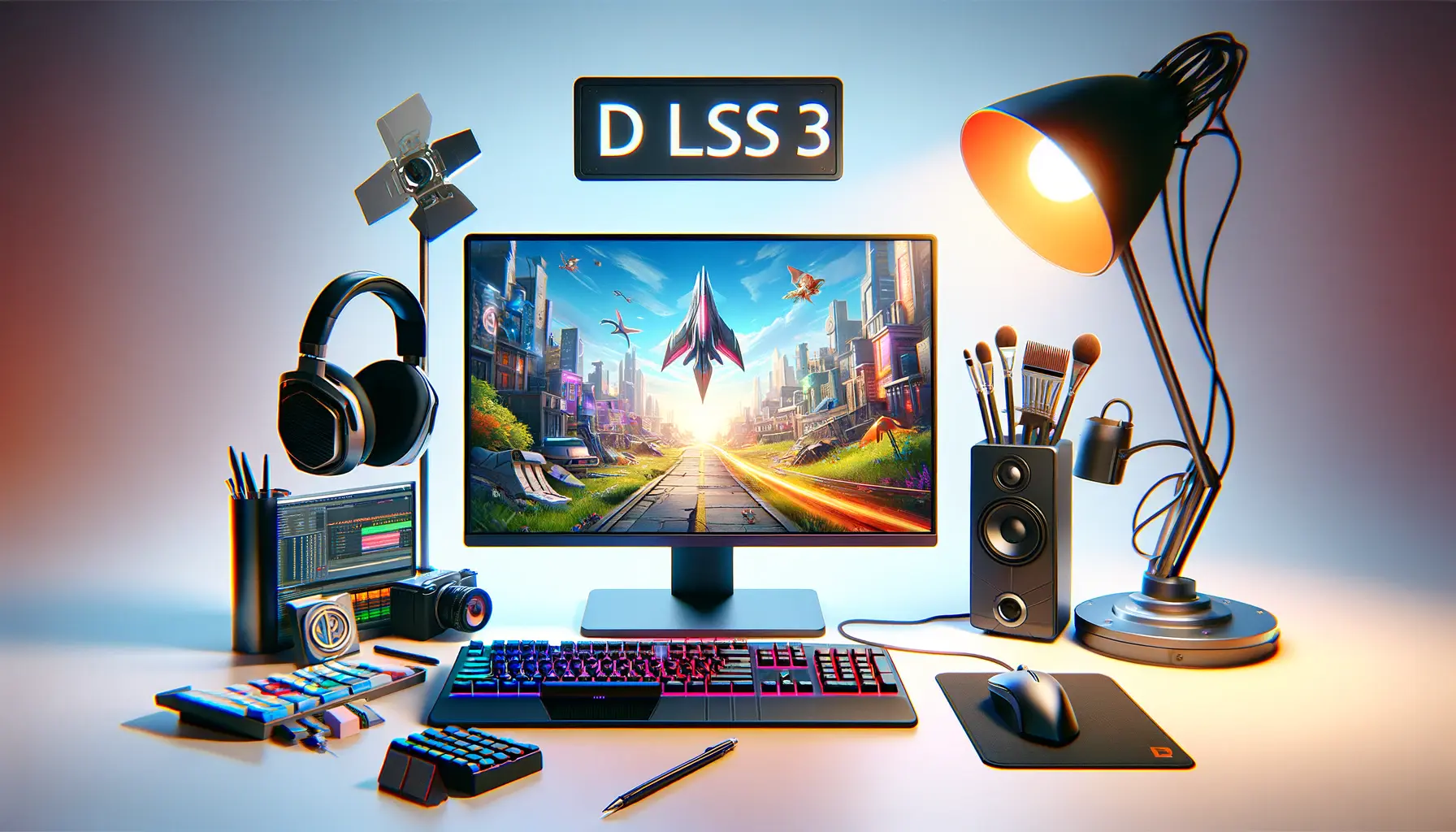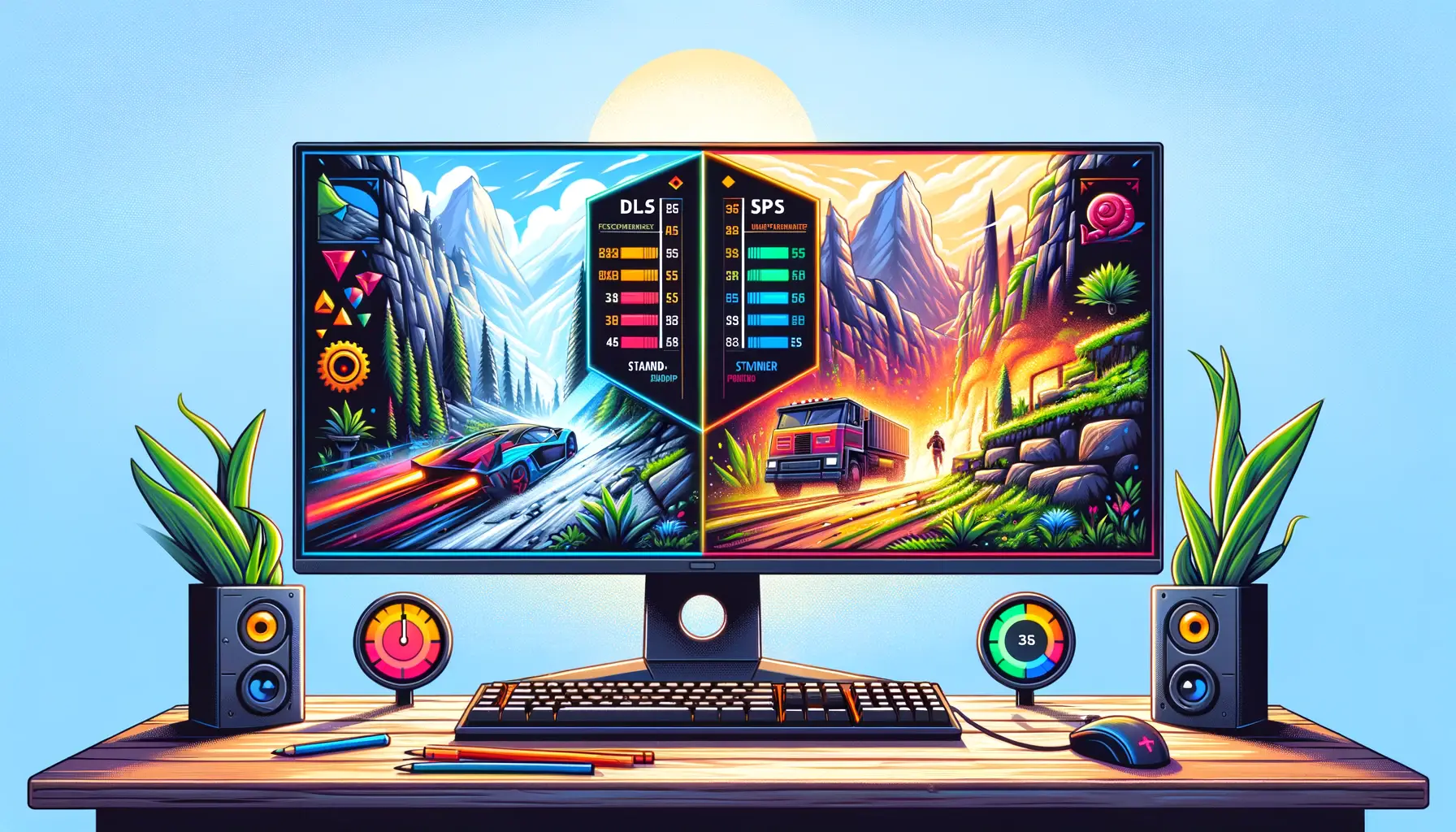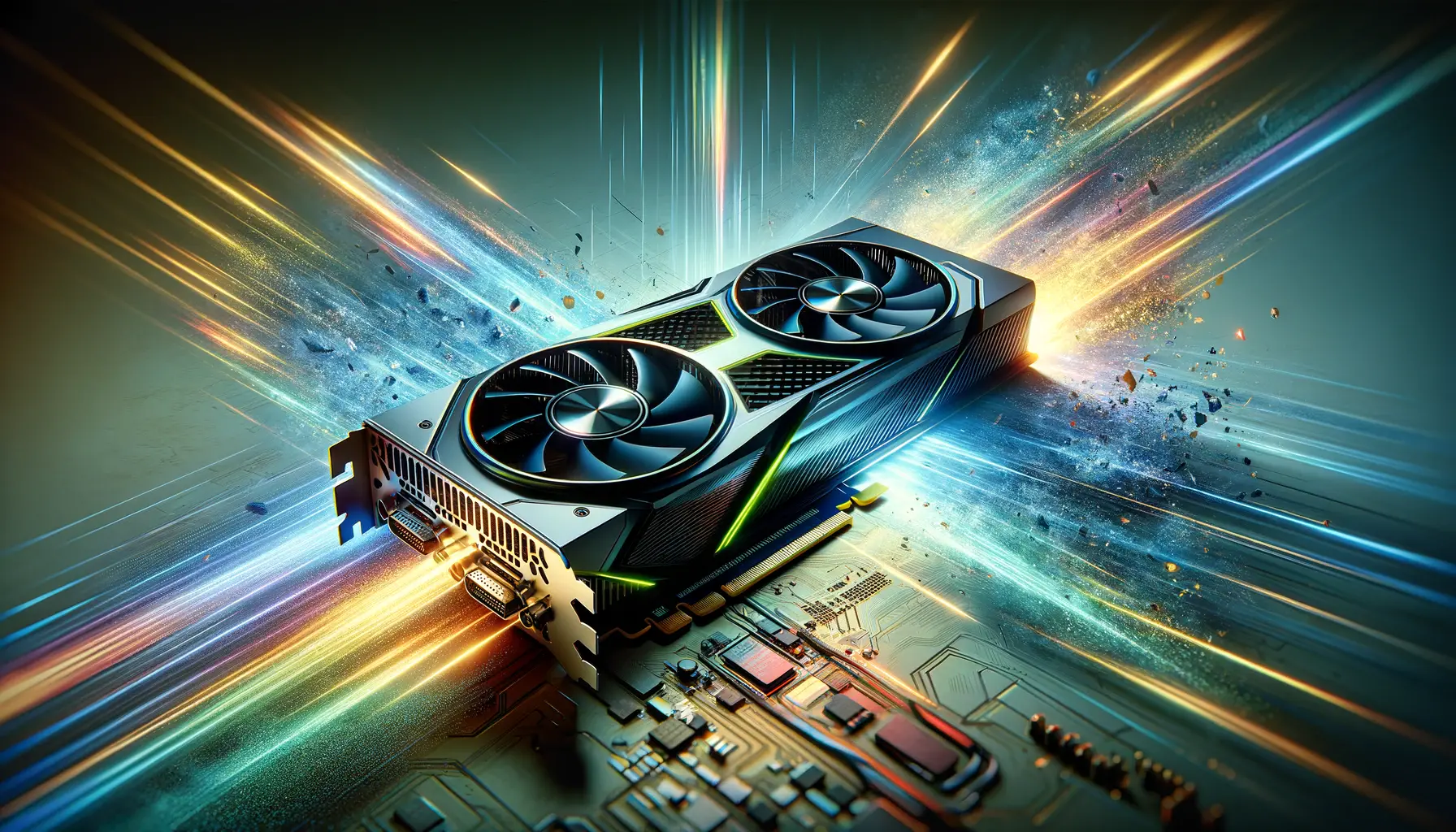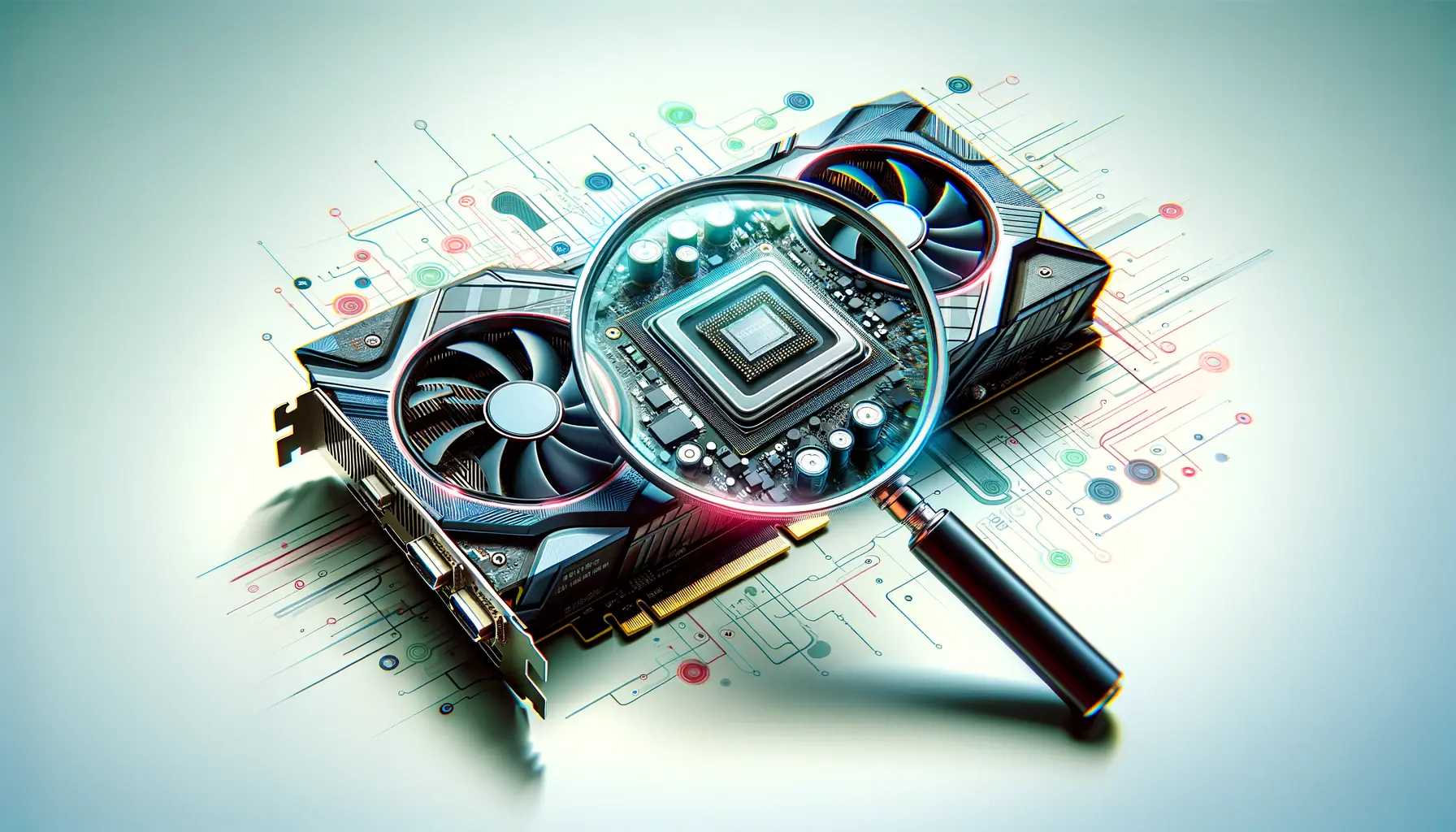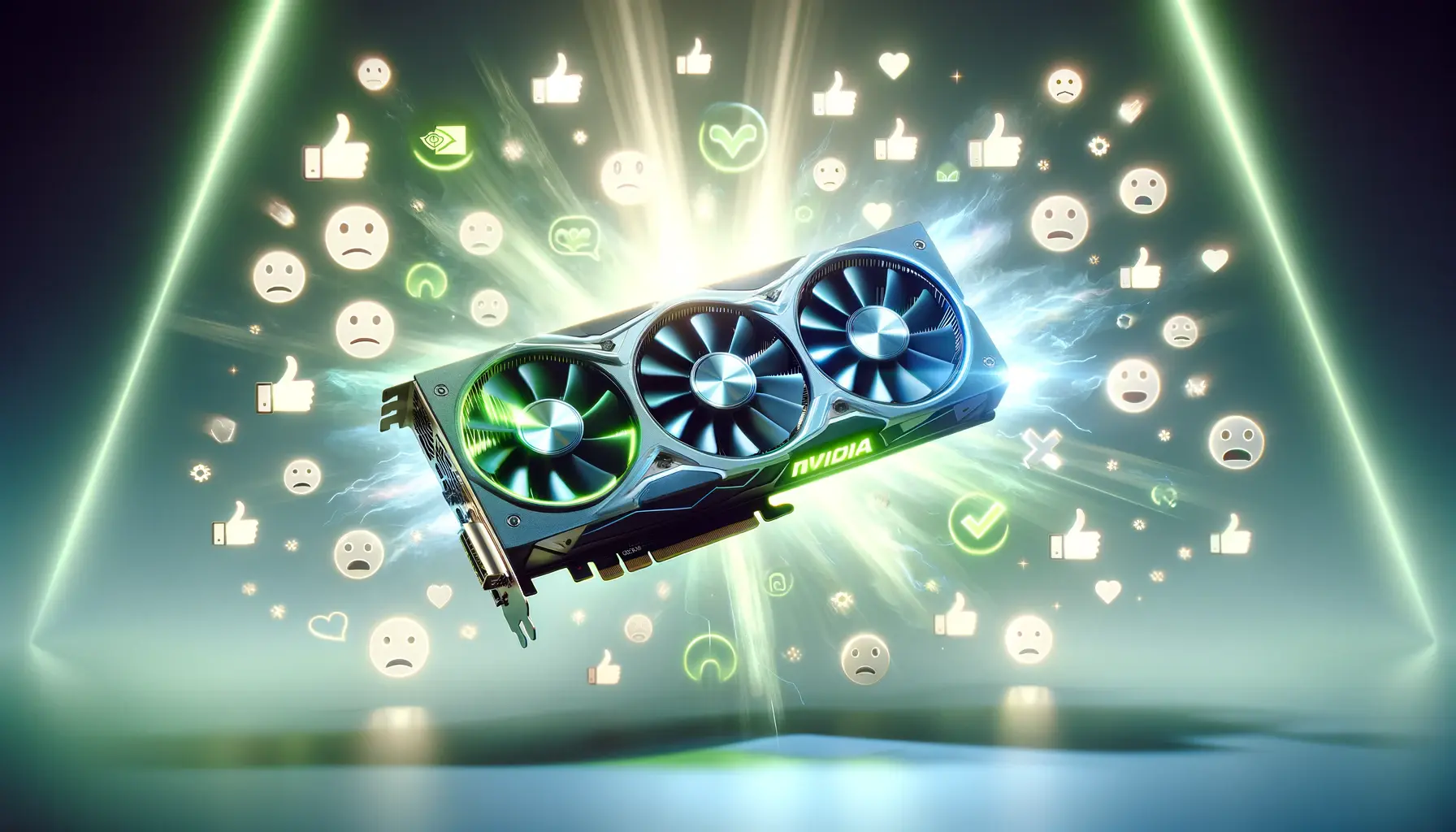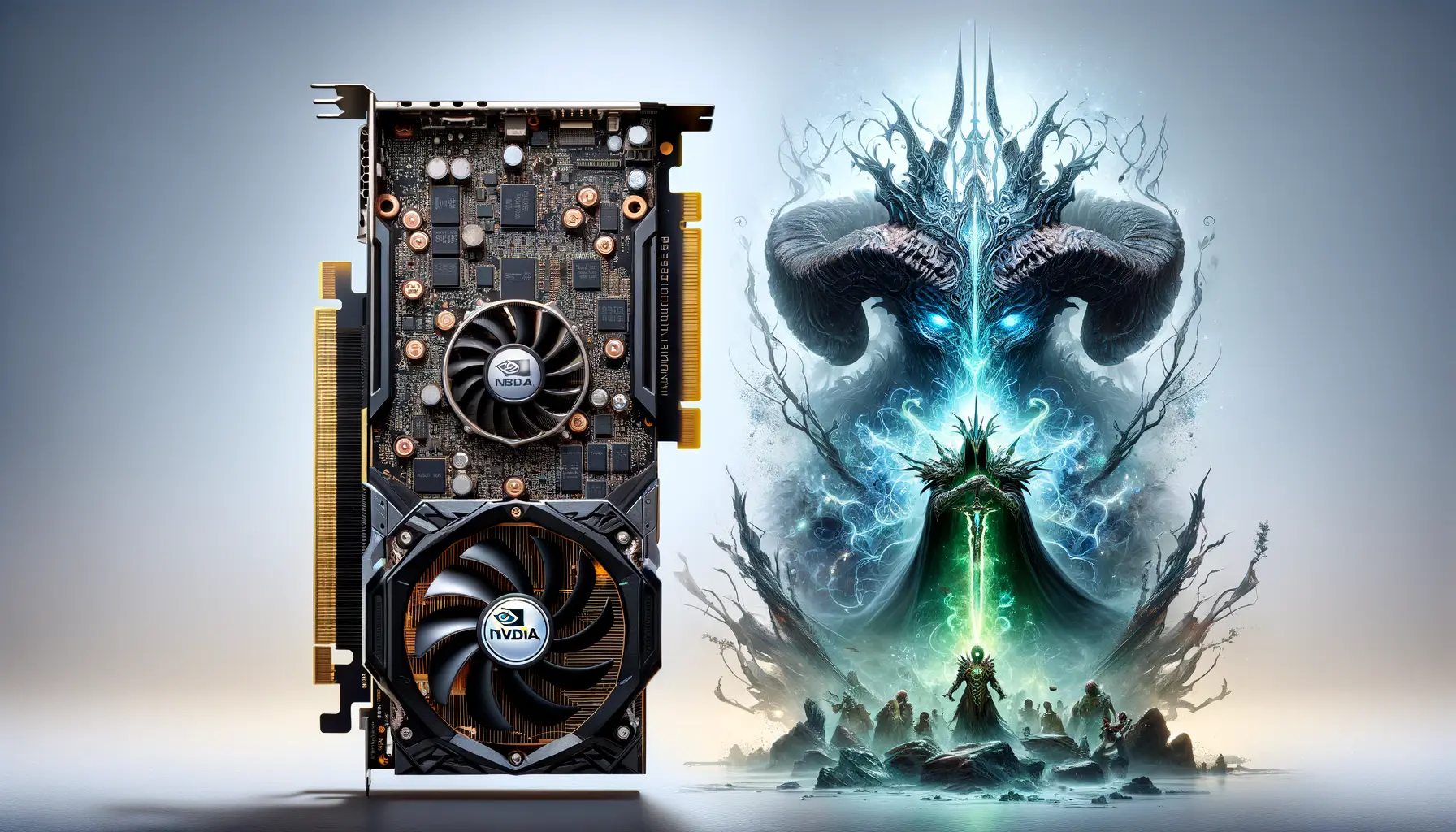The gaming industry has witnessed a transformative era with the advent of NVIDIA’s Deep Learning Super Sampling (DLSS) technology, especially with its latest iteration, DLSS 3.
This groundbreaking technology has not only redefined the boundaries of graphical fidelity and performance but has also opened new avenues for indie game developers.
By leveraging AI to boost frame rates while maintaining high-quality visuals, DLSS 3 stands as a beacon of innovation, particularly for indie games that traditionally operate with more limited resources.
Indie games, known for their creativity and innovation, often face the challenge of balancing performance with visual quality due to budgetary and technical constraints.
NVIDIA’s DLSS 3 technology emerges as a game-changer in this context, offering support that could significantly enhance the gaming experience without the need for high-end hardware.
This article delves into how DLSS 3 technology supports indie games, exploring its implications, benefits, and the potential it unlocks for developers and gamers alike.
- Understanding DLSS 3 and Its Importance for Indie Games
- Benefits of DLSS 3 for Indie Game Developers
- Implementing DLSS 3 in Indie Game Development
- Challenges and Solutions in DLSS 3 Adoption
- Future of Indie Games with DLSS 3
- Community and Developer Support for DLSS 3
- Optimizing Game Design with DLSS 3
- Empowering Indie Games with NVIDIA DLSS 3
- FAQs on NVIDIA DLSS 3 Support for Indie Games
Understanding DLSS 3 and Its Importance for Indie Games
At its core, NVIDIA DLSS 3 is an AI-driven rendering technology designed to increase graphics performance without compromising on visual quality.
By utilizing advanced AI algorithms, DLSS 3 intelligently generates high-quality images from lower-resolution frames, effectively boosting frame rates.
This is particularly beneficial for indie games, which often strive to deliver compelling visual experiences on a fraction of the budget of larger titles.
For indie developers, the adoption of DLSS 3 means being able to offer smoother gameplay and higher fidelity visuals on a wide range of hardware.
This democratizes high-quality gaming experiences, making them accessible to a broader audience.
The technology’s AI-driven approach also simplifies the development process, allowing creators to focus more on the artistic and narrative elements of their games rather than being overly constrained by technical limitations.
Case Studies: Indie Success Stories with DLSS 3
Several indie titles have already begun to harness the power of DLSS 3, witnessing substantial improvements in performance and visual quality.
Games like “Midnight Ghost Hunt” and “Atomic Heart” showcase how DLSS 3 can breathe life into indie games, enabling them to stand toe-to-toe with AAA titles in terms of graphical fidelity.
These case studies highlight the technology’s ability to elevate indie games, providing smoother frame rates and enhanced visuals that significantly improve the gaming experience.
Moreover, the integration of DLSS 3 into indie games has been met with positive feedback from the gaming community.
Gamers appreciate the improved performance and visual quality, which in turn, has led to increased visibility and success for indie titles.
This positive reception underscores the value of DLSS 3 support for indie games, not just from a technical standpoint but also in terms of marketability and player satisfaction.
DLSS 3’s AI-driven technology is a key enabler for indie games, allowing them to achieve higher performance and visual quality, thereby enhancing the overall gaming experience.
Benefits of DLSS 3 for Indie Game Developers
Indie game developers are constantly in search of technologies that can help bridge the gap between creativity and technical limitations.
DLSS 3 offers a plethora of benefits that cater specifically to the needs of indie developers, making it a pivotal tool in the development of visually stunning and smoothly running titles.
Here, we explore the multifaceted advantages DLSS 3 brings to the indie gaming scene.
Enhanced Game Performance
The primary advantage of DLSS 3 for indie developers is the significant boost in game performance.
By utilizing AI to upscale images, DLSS 3 allows games to run at higher frame rates without the need for powerful hardware.
This means that indie games can offer a fluid gaming experience to a wider audience, including those with mid-range or older PCs.
- Accessibility: With DLSS 3, indie games become more accessible to players who may not have the latest gaming rigs, expanding the potential player base.
- Smooth Gameplay: Higher frame rates translate to smoother gameplay, which is crucial for fast-paced indie titles that rely on quick reflexes and precise controls.
Improved Visual Fidelity
DLSS 3 also significantly enhances the visual quality of indie games.
By generating high-resolution images from lower-resolution inputs, it allows games to display detailed textures and effects without the computational cost typically associated with such high-quality visuals.
- Sharper Images: DLSS 3 produces sharper, more detailed images, making the game world more immersive and visually appealing.
- Advanced Effects: The efficiency of DLSS 3 enables the inclusion of advanced graphical effects that would otherwise be too performance-intensive for indie titles.
Development Efficiency
For indie developers, time and resources are often limited.
DLSS 3 aids in streamlining the development process by reducing the need for manual optimization of graphics.
This allows developers to focus more on content creation and game design.
- Reduced Optimization Efforts: DLSS 3’s AI-driven approach minimizes the need for extensive graphics optimization, saving valuable development time.
- Focus on Creativity: With less time spent on technical optimization, developers can allocate more resources to creative aspects like story, art, and gameplay mechanics.
DLSS 3 stands out as a transformative tool for indie developers, offering a balance between performance, visual quality, and development efficiency, thereby enabling the creation of more ambitious indie games.
Implementing DLSS 3 in Indie Game Development
Integrating DLSS 3 into indie games is a strategic move that can significantly elevate the gaming experience.
However, the process involves several key steps and considerations to ensure optimal implementation.
This part of the article outlines the practical aspects of incorporating DLSS 3 into indie game development, from initial planning to execution.
Understanding the Technical Requirements
Before integrating DLSS 3, developers must first understand the technical prerequisites and how the technology fits into their game’s architecture.
DLSS 3 requires specific NVIDIA hardware and software support, making it essential for developers to familiarize themselves with the necessary development environment and tools provided by NVIDIA.
- Hardware Compatibility: Ensuring that the game is being developed with DLSS 3 compatibility in mind, focusing on NVIDIA’s RTX series GPUs.
- Software Integration: Utilizing NVIDIA’s SDKs and APIs to integrate DLSS 3 into the game’s rendering pipeline effectively.
Optimizing Game Assets for DLSS 3
For DLSS 3 to effectively enhance a game’s performance and visual quality, game assets need to be optimized accordingly.
This involves designing textures, models, and effects that can leverage DLSS 3’s AI algorithms to produce the best possible outcome.
- High-Quality Assets: Creating high-resolution textures and detailed models that can benefit from DLSS 3’s upscaling capabilities.
- Efficient Use of Effects: Implementing graphical effects that are optimized for performance, ensuring that they enhance rather than hinder the gaming experience when upscaled.
Testing and Iteration
Implementing DLSS 3 is not a one-off task; it requires continuous testing and iteration to fine-tune the game’s performance and visual output.
Developers should conduct thorough testing across a range of hardware configurations to ensure that DLSS 3 is delivering the intended benefits without compromising the game’s integrity.
- Performance Benchmarking: Regularly testing the game on various hardware setups to benchmark performance improvements and identify any issues.
- Visual Quality Assessment: Evaluating the visual quality of the game with DLSS 3 enabled, ensuring that the upscaling process maintains the game’s artistic vision.
The successful integration of DLSS 3 into indie games not only showcases the technical prowess of the developers but also significantly enhances the player’s experience, making it a worthwhile endeavor for any indie game project.
Challenges and Solutions in DLSS 3 Adoption
While the integration of DLSS 3 offers numerous benefits to indie game developers, it’s not without its challenges.
These hurdles can range from technical issues to concerns about accessibility and compatibility.
However, with every challenge comes a solution, and understanding these can help developers navigate the adoption process more smoothly.
Technical Integration Hurdles
One of the primary challenges faced by developers is the technical complexity involved in integrating DLSS 3 into their games.
This can include issues with compatibility, optimization, and ensuring that the game runs smoothly across all supported hardware.
- Compatibility Concerns: Ensuring that the game is compatible with the specific NVIDIA hardware required for DLSS 3 can be daunting, especially for developers new to the technology.
- Optimization Challenges: Fine-tuning the game to take full advantage of DLSS 3’s capabilities requires a deep understanding of the technology and its impact on game performance and visuals.
Solutions to these challenges often involve extensive research, collaboration with NVIDIA, and participation in developer forums and communities.
Access to NVIDIA’s resources, documentation, and support can significantly ease the integration process, allowing developers to overcome technical hurdles more efficiently.
Player Accessibility and Awareness
Another challenge is ensuring that players are aware of DLSS 3 and its benefits, as well as making sure that the technology is accessible to a wide audience.
This includes educating players on the hardware requirements and how to enable DLSS 3 in the game settings.
- Educating Players: Developers can create guides, tutorials, and FAQs to help players understand DLSS 3 and how to take advantage of it in their games.
- Hardware Accessibility: While DLSS 3 requires specific NVIDIA GPUs, developers can work on optimizing their games for a range of hardware to ensure that as many players as possible can enjoy the benefits.
Addressing these challenges requires a proactive approach from developers, including clear communication with their audience and efforts to make the technology as inclusive as possible.
By doing so, indie developers can maximize the impact of DLSS 3 on their games, ensuring that players have the best possible experience.
Despite the challenges, the adoption of DLSS 3 presents a valuable opportunity for indie developers to elevate their games, offering enhanced performance and visuals that can compete with larger titles.
Future of Indie Games with DLSS 3
The integration of DLSS 3 into indie games not only marks a significant technological advancement but also heralds a new era for the indie gaming industry.
As developers continue to explore and leverage this technology, the future of indie games looks brighter and more promising than ever.
This section delves into the potential long-term impacts of DLSS 3 on indie games, highlighting the transformative possibilities it brings to the table.
Pushing Graphical Boundaries
DLSS 3 enables indie developers to push the boundaries of graphical fidelity in their games, allowing for the creation of visually stunning experiences that were previously out of reach.
This leap in visual quality can help indie games to stand out in a crowded market, attracting players who seek cutting-edge graphics alongside innovative gameplay.
- Enhanced Visuals: With DLSS 3, indie games can feature advanced lighting, shadows, and textures, making the game worlds more immersive and realistic.
- Competitive Edge: The ability to offer high-quality visuals can give indie titles a competitive edge, appealing to a broader audience and increasing their marketability.
Expanding Accessibility and Inclusivity
By improving performance without the need for high-end hardware, DLSS 3 makes gaming more accessible and inclusive.
This democratization of gaming ensures that more players can enjoy the latest indie titles, regardless of their PC’s capabilities.
- Broader Reach: DLSS 3 allows indie games to reach a wider audience, including those with older or less powerful hardware, expanding the potential player base.
- Inclusive Gaming Experience: The technology ensures that more players can enjoy smooth, high-quality gaming experiences, fostering a more inclusive gaming community.
Innovation in Game Development
DLSS 3 not only enhances the visual and performance aspects of indie games but also encourages innovation in game development.
With the technical barriers lowered, developers can focus more on creativity, storytelling, and unique gameplay mechanics, leading to the creation of more diverse and innovative titles.
- Creative Freedom: The efficiency and performance gains provided by DLSS 3 free developers from technical constraints, allowing for greater creative freedom in game design.
- Diverse Gaming Experiences: This technological advancement encourages the development of unique and diverse gaming experiences, enriching the indie gaming ecosystem.
The future of indie games with DLSS 3 is not just about enhanced graphics and performance; it’s about opening new horizons for creativity, accessibility, and innovation in game development.
Community and Developer Support for DLSS 3
The adoption and success of DLSS 3 in the indie gaming community hinge not only on the technology itself but also on the support and resources available to developers.
NVIDIA and the broader gaming community play crucial roles in fostering an environment where DLSS 3 can thrive, enhancing indie games and the experiences they offer.
This section explores the support systems in place for developers looking to implement DLSS 3 in their projects.
NVIDIA’s Role in Supporting Developers
NVIDIA has been instrumental in providing the necessary tools, documentation, and support to ensure developers can effectively integrate DLSS 3 into their games.
From detailed SDKs to active developer forums, NVIDIA’s commitment to supporting indie developers is evident in the resources and assistance they offer.
- Comprehensive Documentation: NVIDIA provides extensive documentation and guides on DLSS 3, making it easier for developers to understand and implement the technology.
- Active Developer Forums: NVIDIA’s developer forums serve as a valuable resource for indie developers, offering a platform for discussion, troubleshooting, and sharing best practices.
Community Engagement and Feedback
The gaming community’s feedback and engagement are vital in refining and improving DLSS 3’s implementation in indie games.
Through beta testing, community forums, and social media, developers can gather valuable insights and suggestions from players, further enhancing the gaming experience.
- Beta Testing Feedback: Engaging with the community through beta testing allows developers to gather direct feedback on DLSS 3’s performance and visual impact, leading to more polished final products.
- Community Forums and Social Media: Active participation in gaming forums and social media provides developers with a broader perspective on player expectations and experiences with DLSS 3.
Collaboration Among Indie Developers
Collaboration and knowledge sharing among indie developers are key to maximizing the benefits of DLSS 3.
By sharing experiences, challenges, and solutions, the indie gaming community can collectively overcome obstacles and enhance the quality of their titles.
- Knowledge Sharing: Indie developers often share their insights and experiences with DLSS 3, helping others navigate the integration process more smoothly.
- Collaborative Projects: Collaborations on projects or shared resources can lead to innovative uses of DLSS 3, pushing the boundaries of what’s possible in indie games.
The support from NVIDIA, combined with the engagement of the gaming community and collaboration among developers, creates a fertile ground for the successful integration of DLSS 3 in indie games, driving forward innovation and excellence in the indie gaming scene.
Optimizing Game Design with DLSS 3
The advent of DLSS 3 technology offers indie game developers an unprecedented opportunity to optimize their game design for both performance and visual quality.
This final piece of our exploration into NVIDIA DLSS 3’s impact on indie games focuses on how developers can harness this technology to refine game design elements, ensuring an optimal balance between aesthetics and functionality.
Strategic Asset Optimization
DLSS 3 enables developers to strategically optimize their game assets, ensuring that each element contributes to an immersive and visually engaging experience without compromising performance.
This involves a careful selection of textures, models, and effects that are specifically designed to take advantage of DLSS 3’s upscaling capabilities.
- High-Resolution Textures: Developers can incorporate high-resolution textures that remain crisp and detailed even when upscaled, enhancing the game’s visual depth.
- Complex Models: With DLSS 3, more complex models can be used without significantly impacting frame rates, allowing for richer game environments.
Enhancing Gameplay Mechanics
DLSS 3’s performance improvements also open new avenues for enhancing gameplay mechanics.
Developers can introduce more dynamic and complex interactions, physics, and effects, creating a more engaging and responsive gaming experience.
- Fluid Dynamics and Physics: Improved performance allows for more sophisticated physics simulations and fluid dynamics, making the game world more realistic and interactive.
- Complex Interactions: Developers can implement more complex interaction models between characters and environments, thanks to the additional computational headroom provided by DLSS 3.
Adaptive Resolution Scaling
DLSS 3’s adaptive resolution scaling is another tool in the game designer’s toolkit, allowing for dynamic adjustment of the game’s resolution based on performance needs.
This ensures that the game runs smoothly across a wide range of hardware, without sacrificing visual quality.
- Dynamic Performance Optimization: By adjusting the resolution in real-time, games can maintain high frame rates during demanding scenes, ensuring consistent gameplay quality.
- Customizable Settings: Offering players customizable settings for DLSS 3 can enhance their experience, allowing them to tailor the balance between performance and visual quality to their preference.
DLSS 3 not only revolutionizes the visual and performance aspects of indie games but also empowers developers to push the boundaries of game design, creating more immersive, dynamic, and engaging gaming experiences.
Empowering Indie Games with NVIDIA DLSS 3
The journey through the capabilities and impact of NVIDIA DLSS 3 on indie games reveals a landscape of opportunity and innovation.
As we’ve explored, DLSS 3 is not just a technological advancement; it’s a catalyst for change in the indie gaming sector.
By offering support that significantly enhances performance and visual quality, DLSS 3 enables indie developers to dream bigger, pushing the boundaries of what’s possible within the constraints of budget and resources.
The Path Forward with DLSS 3
The integration of DLSS 3 into indie games marks a pivotal moment in the evolution of game development.
This technology democratizes high-quality gaming experiences, making them accessible to a wider audience and ensuring that the creativity and innovation of indie games can shine through without being limited by hardware constraints.
The future of indie gaming, powered by DLSS 3, looks bright, with the potential for more immersive, visually stunning, and complex games that can engage players in new and profound ways.
Challenges Met with Innovation
While the adoption of DLSS 3 comes with its set of challenges, the indie gaming community’s response has been nothing short of innovative.
Developers have navigated technical hurdles, optimized game assets, and engaged with the community to ensure that the benefits of DLSS 3 are fully realized.
This collaborative effort between NVIDIA, developers, and the gaming community underscores a shared commitment to advancing the quality and accessibility of indie games.
- Technical integration and optimization have paved the way for enhanced game performance and visual fidelity.
- Community engagement and developer support have fostered an environment where feedback and collaboration drive continuous improvement.
- Innovative game design practices have emerged, leveraging DLSS 3 to create more dynamic and immersive gaming experiences.
Conclusion: A New Era for Indie Games
In conclusion, NVIDIA DLSS 3 stands as a beacon of support for indie games, offering a bridge over the gap between vision and capability.
The technology’s impact extends beyond just aesthetics and performance; it reshapes the very process of indie game development, encouraging creativity, innovation, and a focus on delivering engaging player experiences.
As indie developers continue to harness the power of DLSS 3, we can expect to see a new era of indie games that are not only visually captivating and smoothly playable but also more inclusive and accessible to a diverse gaming audience.
The support for indie games through NVIDIA DLSS 3 is not just a testament to technological progress but a commitment to the future of gaming—a future where the only limit is the imagination of the creators.
FAQs on NVIDIA DLSS 3 Support for Indie Games
Explore commonly asked questions about NVIDIA DLSS 3 and its impact on indie gaming.
NVIDIA DLSS 3 is an AI-powered rendering technology that boosts game performance and visual quality on RTX 40 Series GPUs.
DLSS 3 allows indie games to achieve higher frame rates and improved visuals, making high-quality gaming more accessible.
DLSS 3 is designed for GeForce RTX 40 Series GPUs, focusing on leveraging the latest hardware for optimal performance.
DLSS 3 includes Frame Generation, Super Resolution, and NVIDIA Reflex, enhancing both performance and responsiveness.
While DLSS 3 integration requires some technical know-how, NVIDIA provides extensive documentation and support for developers.
Yes, DLSS 3 significantly enhances visuals by generating high-quality images from lower-resolution inputs, improving texture and detail.
Challenges include ensuring hardware compatibility and optimizing game assets, but these can be managed with proper planning and support.
The gaming community has been positive, appreciating the performance gains and visual improvements DLSS 3 brings to games.

